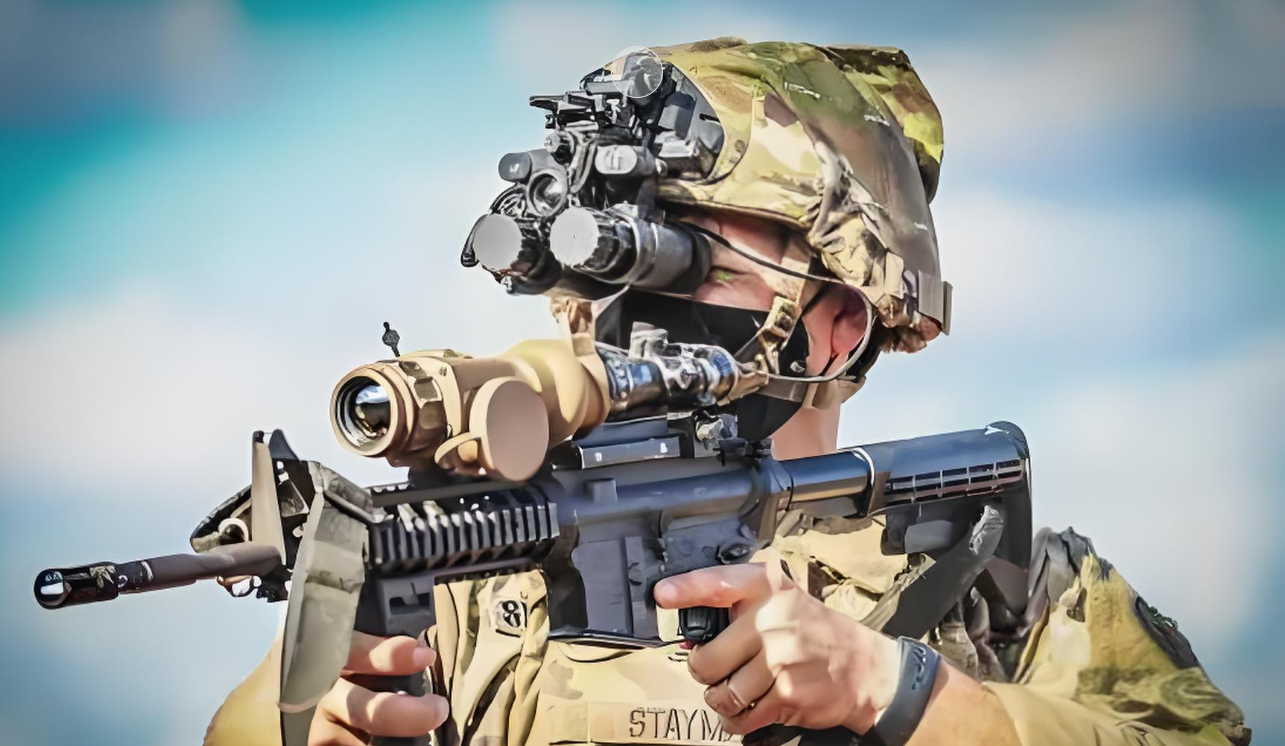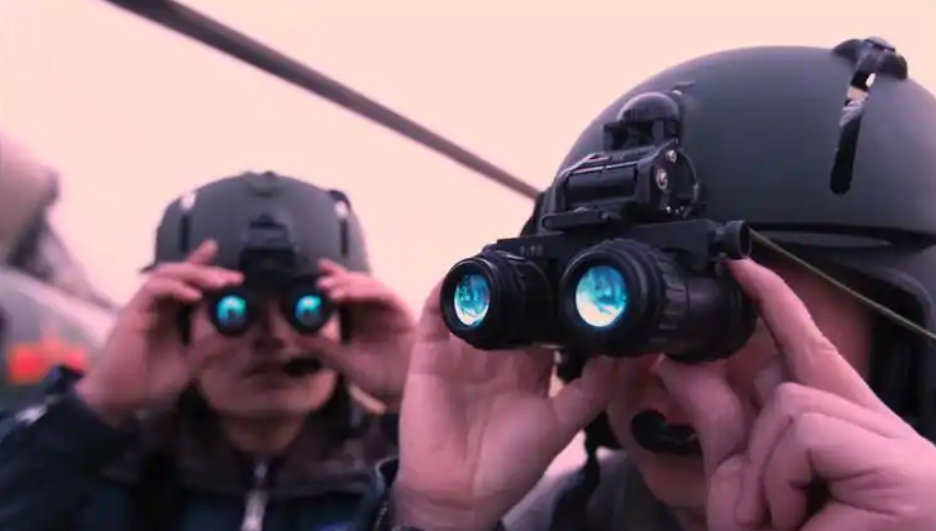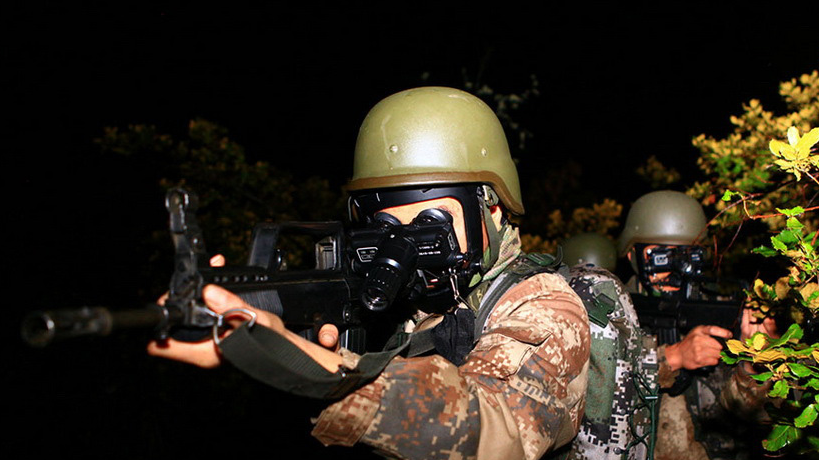As an important military equipment, helmet-mounted night vision goggles have also been widely used in security, rescue, hunting and other fields in recent years. It can help users get a clear view in a dark night environment, improve work efficiency and safety. However, it is not easy to choose a helmet-mounted night vision goggles with good performance. What performance should helmet-mounted night vision goggles have?
Technical principle
Image enhancement technology: The performance of the image intensifier directly affects the imaging quality and observation distance of the night vision goggles. High-quality image intensifiers can convert weak light into electrons more efficiently and amplify it, thereby providing clearer and brighter images. For example, night vision goggles using advanced third-generation or fourth-generation image enhancement technology have significantly better imaging effects under low-light conditions than products with earlier technologies, can observe targets at a longer distance, and have higher image resolution and contrast.
Thermal imaging technology: The performance of the thermal imager's detector is crucial. The detector's sensitivity, resolution, and thermal resolution determine whether the thermal imaging night vision goggles can accurately detect the target's tiny temperature differences and clearly present the target's thermal image. Highly sensitive detectors can detect targets at a longer distance, high resolution can provide more detailed target outline and detail information, and high thermal resolution helps to distinguish the target from the background and the subtle temperature changes between different targets.
Optical system
Lens quality: The optical properties of the lens, such as focal length, aperture, resolution and transmittance, will affect the image quality. High-quality lenses can collect more light and reduce light scattering and distortion, thereby providing clearer and sharper images. Large aperture lenses can obtain more light intake under low light conditions and improve the low-light performance of night vision devices; high-resolution lenses can better distinguish the details of the target, which is very important for long-distance observation and target identification.

Optical coating: High-quality optical coating can reduce the reflection of light on the lens surface, improve light transmittance, and enhance the contrast and brightness uniformity of the image. Multi-layer coating technology can achieve efficient anti-reflection effect in the range of light of different wavelengths, reduce the interference of stray light, and enable night vision devices to obtain better visual effects under various lighting conditions.
Power system
Battery type and capacity: Night vision devices usually need to be powered by batteries. The type and capacity of the battery determine the endurance of night vision devices. High-performance batteries such as lithium batteries have high energy density and long service life, which can provide more lasting power support for night vision devices, reduce the number of battery replacements during missions, and improve combat efficiency and convenience.
Power management technology: Advanced power management technology can optimize the efficiency of battery use, reduce power consumption, and extend battery life. For example, through intelligent power control circuits, the night vision device automatically enters a low-power standby mode when it is not in use, and quickly wakes up and resumes normal working state when it is needed, thereby maximizing power saving while ensuring performance.

Environmental factors
Lighting conditions: The performance of night vision devices depends largely on the light intensity in the environment. In low-light environments, such as nights with bright moonlight and starlight, low-light night vision devices work better; in extremely dark environments, such as cloudy days without moonlight or dense forests, thermal imaging night vision devices may have more advantages. In addition, strong light sources such as enemy searchlights and flares may interfere with the imaging of night vision devices, causing the image to be too bright or halo to appear, affecting the observation effect.
Meteorological conditions: Harsh meteorological conditions such as rain, fog, and snow will scatter and attenuate light, reducing the observation distance and imaging clarity of night vision devices. Especially for infrared night vision devices, water vapor has a more obvious absorption and scattering effect on infrared rays, which may blur the thermal image of the target. In high temperature and high humidity environments, the electronic components and optical systems inside the night vision device may also be affected, resulting in performance degradation or failure.
Terrain and background: Complex terrain and background will affect the target detection and identification of night vision devices. For example, in areas with complex terrain such as mountains and jungles, the target may be obscured or integrated with the surrounding environment, increasing the difficulty of discovery and identification. In addition, different surfaces and vegetation will present different thermal characteristics under thermal imagers, which may also interfere with the accurate judgment of the target.

Equipment stability and reliability
Mechanical structure design: Good mechanical structure design can ensure that the night vision device remains stable and reliable in various complex usage environments. A solid shell, a reasonable internal structure layout, and good anti-vibration and anti-impact performance can prevent the device from being damaged or malfunctioning when subjected to external forces, ensuring that the night vision device can work normally under harsh conditions such as field combat and marching.
Electronic component quality and heat dissipation performance: High-quality electronic components are the key to ensuring the stable performance of night vision devices. The use of reliable chips, circuit boards and other electronic components can reduce the probability of equipment failure and increase the service life of the equipment. At the same time, since the night vision device may generate heat during operation, good heat dissipation performance can prevent the device from overheating and causing performance degradation or malfunction, ensuring that the night vision device always maintains stable performance during long-term use.

User operation and maintenance
Operation skills: It is crucial for users to operate the night vision device correctly. Mastering the various functions and operation methods of the night vision device, such as focusing, brightness adjustment, mode switching, etc., can give full play to the performance advantages of the night vision device. Improper operation may cause problems such as blurred images, inability to focus, or missing important targets.
Maintenance: Regular maintenance of the night vision device can extend its service life and maintain good performance. Timely cleaning of the lens, wiping of the body, replacement of aging batteries and components, etc. can prevent dust, dirt and moisture from entering the device and avoid performance degradation and failures caused by long-term use. In addition, calibrating and testing the night vision device in accordance with the prescribed procedures and requirements is also an important measure to ensure its accurate and reliable performance.


